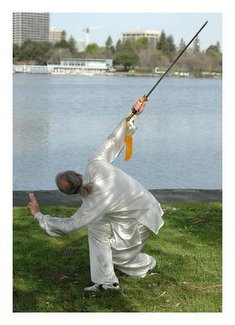Cross posted @ God Is 4 Suckers! Those who cannot remember the past are condemned to repeat it. - George Santayana, The Life of Reason, Volume 1, 1905
Those who cannot remember the past are condemned to repeat it. - George Santayana, The Life of Reason, Volume 1, 1905
So firstly: yes, Virginia, there WAS a League Of Militant Atheists, AKA the Society of The Godless:
Society of the Godless (Russian: Общество безбожников); other names include Союз воинствующих безбожников (The Union of Belligerent Atheists or The League of the Militant Godless[1]) and Союз безбожников (The Union of the Godless), was a mass volunteer antireligious organization of Soviet workers and others in 1925-1947. It "consisted of Party members, members of the Komsomol youth movement, workers and army veterans"[2]
S.o.G. was an antireligious movement that developed in Soviet Russia under the influence of the ideological and cultural views and policies of the Communist Party.
Hold your cheers – it wasn’t quite the ideological utopia one could hope.
S.o.G. embraced workers, peasants, students, and intelligentsia. It had its first affiliates at factories, plants, collective farms (kolkhoz), and educational institutions. By the beginning of 1941, S.o.G. had about 3.5 million members of 100 nationalities. It had about 96,000 offices across the country. Guided by Bolshevik principles of antireligious propaganda and party's orders with regards to religion, S.o.G. aimed at fighting religion in all its manifestations and forming scientific mindset among the workers.
Sounds good, no? No:
It popularized atheism and scientific achievements, conducted 'individual work' (a method of sending atheist tutors to meet with individual believers to convince them of atheism, which could be followed up with public harassment if they failed to comply) with religious people, prepared propagandists and atheistic campaigners, published scientific literature and periodicals, organized museums and exhibitions, conducted scientific research in the field of atheism and critics of religion.
Mind you, when they say ‘public harassment’, it’s not similar to our culture – a spirited debate on PBS, the BBC, or somebody’s blog. We’re talking Stalinist Russia here.
The debate on how to best combat religion was argued across the Soviet leadership, until in the late 20s and early 30s, it was resolved by Stalin who condemned the extremes of both sides, and Yaroslavsky followed suit. The do-nothing approach of the rightists who thought religion would die away naturally and the leftist approach to attack all forms of religion as class enemies were both condemned as deviations from the party line. Yaroslavsky argued against the leftist (who had earlier criticized him) that if religion was simply a class phenomena there would be no need to combat it if a classless society was truly being produced. He affirmed that an all-sided attack on religion was needed, but did not subscribe to the leftist deviation that had been condemned.
I find it terribly difficult to envision Stalin as a moderate of any sort.
The League did not only attack religion but it also attacked deviations from what it saw as the proper line to combat religion in the USSR and in effect set the 'proper' line to follow in this sphere for party membership. Early marxist beliefs that religion would disappear with the coming of a tractor (claimed by Trotsky) were ridiculed by the League.
I assume the tractor in question was metaphorical?
The popularity of religion among nationalistic intellectuals was pointed out by Lukachevsky (LMG) and he claimed that if religion was only rooted from ownership of property, it could not explain the growth of the renovationists.
I’ve never taken a class in psychology, but even I could tell you that religion’s rooted in identity issues.
It employed the powers given to it by the CPSU Central Committee at the 1929 congress to dictate orders to schools, universities, the armed forces, the trade unions, the Komsomol, the Organization of Young Pioneers, the Soviet Press and other institutions for the purpose of its anti-religious campaign. It criticized many public institutions (including the Communist Party) for failing to adequately combat religious belief and instructed them on how to be more effective. The People's Commisariat for enlightenment was heckled and Glavnauka, the Chief Administration for Science and Scholarship was also singled out for criticism. A spokesperson for the latter tried to justify their behaviour to the LMG by claiming that they had reduced the total number of historical buildings under its protection (mostly ancient churches and monasteries) from 7000 to 1000, by destroying them.
The next time someone claims we’re militant, you can point this out as an example, and see how it epically fails when applied to today’s standards. Property damage? Really? Wow.
And boy, were these folks busy. None of that ‘herding cats’ nonsense for those people:
In 1931, the LMG boasted that 10% of the nation's schoolchildren were LMG members.
The LMG underwent great growth between 1929 and 1932, partly as a result of the requirement of Komsomol members to join it. The LMG's hold over the Komsomol is reflected in the latter's programme at its 10th congress that state 'The Komsomol patiently explains to the youth the harmfulness of superstitions and of religious prejudices, organizing for this purpose special study circles and lectures on anti-religious propaganda. The League had grown from 87,000 members in 1926 to 500,000 in 1929 and it reached a peak of 5,670,000 in 1931 (it had intended to get 17 million, however, as its target). It declined to 2 million in 1938, but rose again to 3.5 million in 1941.
The enthusiasm of its new members was notably poor, however, as its dues were left unpaid and only a minority appeared to have great interest in anti-religious work.
The League printed masses of anti-religious literature. The weekly Bezbozhnik reached 500,000 copies per issue in 1931. The monthly Bezbozhnik, grew from 28,000 in 1928 to 200,000 in 1931, dropped to 150,000 after 1932, climbed to 230,000 in 1938 and went down 155,000 in 1939. The Bezbozhnik u stanka consistently ran 50,000- 70,000 copies per issue, however, it changed from a monthly to a fortnightly in 1929 and continued to produce until it was closed in 1932. Yaroslavsky's scholarly monthly for the LMG central committee 'Antireligioznik' (The Antireligious) appeared in 1926, and reached 17,000 circulation in 1929 (it was a 130 page publication), 30,000 in 1930 and 27,000 in 1931. Its material was often repeated over different issues and it was more primitive in its scholarly material than it had beeen intended. It was reduced to 64 pages in 1940, and produced between 40,000 and 45,000 in 1940-41 before it was finally cancelled.
The League also printed anti-religious textbooks. An 'Anti-religious Textbook for Peasants' was produced between 1927 and 1931, with a circulation of 18,000 for the first edition and 200,000 for the sixth. A similar textbook for urban people was created in 1931, followed by a universal amalgamated textbook.
LMG member, I A Shpitsberg began publishing a scholarly journal in the late 20s called Ateist. It was changed to Voinstvuiuschii ateizm (Militant Atheism) in 1931 and it was published by the LMG central council. In 1932 it was swallowed up by Antireligioznik.
From 1928 to 1932, a journal for peasants named Derevenskii bezbozhnik (The Rural Godless) was produced. It was claimed to be so popular among the peasantry that it was 'read to tatters', and contradictorily it ceased publication in 1932. The supposedly popular nature of the atheist propaganda was also contradicted by cases of reported lynchings of anti-religious propagandists and murder of LMG agitators[. In a similar vein, in 1930, the LMG leadership advised that social surveys of believers in schools classes where the majority of pupils were believers was harmful, and that such data should not, as a principle, be used. Another such anecdote can be found in the 1929 Moscow religion survey, in which 12,000 industrial workers were surveyed anonymously and only 3,000 returned the survey, of which 88.8 % claimed to be atheists, and it was then declared that 90% of Moscow industrial workers were atheists .
[Author’s aside: skewing figures is decidedly a human condition, because the human animal sees what it wants to, not what is contrary to itself.]
The non-serial LMG literature grew from 12 million printed pages in 1927 to 800 million in 1930. In 1941 sixty-seven books and brochures of antireligious propaganda were printed with a total circulation of 3.5 million copies.
A textbook produced by the LMG in 1934 admitted the existence of sincere believers among the intellectuals, however, this was contradicted by Yaroslavsky in 1937 who claimed that all scholars and scientists who believe in God were insincere deceivers and swindlers .
The League trained a massive number of anti-religious propagandists and anti-religious workers. This work included lecture cycles.
The LMG had successfully reduced the number of religious communities of all faiths from 50,000 in 1930 to 30,000 by 1938 and 8,000 by 1941. The last figure includes, however, 7,000 communities in the annexed western territories (thereby making only 1,000 remaining in the rest of the country) .
It sure sounds incredibly successful, yes? Not really:
The climate of the campaign against religion was changing in the late 30s and early 40s. The regime slowly became more moderate in its approach to religion. Yaroslavsky, in 1941 warned against condemning all religious believers, but said that there were many loyal Soviet citizens still possessing religious beliefs. He called for patient and tactful individual work without offending the believers, but re-educating them. He claimed that religion had disappeared in some parts of the country but in other parts (especially in the newly annexed territories) it was strong, and he warned against starting a brutal offensives in those areas.
He claimed that there were very few attempts to re-open churches and that this was a sign of the decline in religion. He branded those who tried to re-open churches as former kulaks and falsifiers of figures . This report was contradicted, however, by the LMG's own figures that found perhaps half the country still held religious beliefs, even if they had no structures to worship in any longer and they could no longer openly express their beliefs.
And the next time you hear that hoary old chestnut that Nazis were atheists, trot this little factoid out:
A glaring answer to this report was found when the Nazis invaded in 1941, and churches were re-opened underneath the German occupation, while believers flocked to them in the millions. In order to gain support for the war effort against the German forces that were effectively liberating religious believers from the persecution against them, Stalin ended the anti-religious persecution and the LMG was disbanded. All LMG periodicals ceased to publish by September 1941. It's official disbandment date is unknown, but traced somewhere between 1941-1947 .
There’s a moral to the story here – you can’t change hearts and minds at gunpoint, by property damage or force. Violence as a rule tends to breed a silent resistance, and religion tends to thrive under these circumstances, when people are shorn of hope and forced to silence. No, it will likely require long years of waging a (metaphorical) war of attrition, chipping away at the memes like drops of water eroding a brick – it will take time and patience. It’s likely why a great many of us waging this war of words are so cranky.
Be that as it may, take the lesson seriously – Santayana’s aphorism may seem cliché and time-worn, but it most assuredly is not.
Till the next post, then.














No comments:
Post a Comment